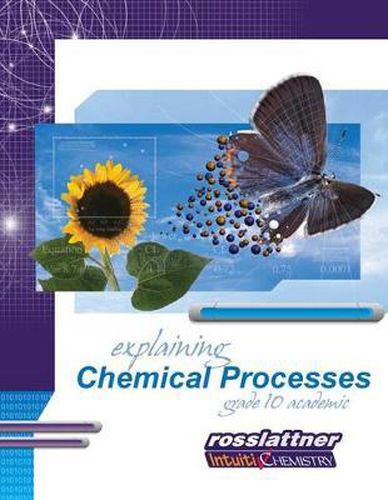Readings Newsletter
Become a Readings Member to make your shopping experience even easier.
Sign in or sign up for free!
You’re not far away from qualifying for FREE standard shipping within Australia
You’ve qualified for FREE standard shipping within Australia
The cart is loading…






Take your beginning chemistry students farther than you ever imagined!
The IntuitivChemistry books will guide your student through the traditional chemistry curriculum - and make it intuitive in three unique ways.
We are all visual learners. Every student exercise uses simple diagrams that are easy to learn, diagrams designed to have extraordinary power and depth. The diagrams are based upon the mental models that all of us use to make sense of the world, so they feel intuitive. And they are tested carefully against demands of good scientific theory. You will use the Ross model of the atom, a simplified version of the atom that works the way that young people think. Students can use the Ross model to make insightful explanations and accurate predictions of chemical behaviour. You will follow the traditional curriculum in a slightly re-arranged order, to avoid confusion and build student competency. Competent students are confident students! We will provide you with a model of science that directs the student’s attention to the student’s own understanding. Each experiment tests the validity of the student’s own thinking.
Each two-page student activity requires students to represent chemical processes four different ways: Balanced chemical equation, word equation, Dalton diagram equation and mass equation. These four representations reinforce student understanding of chemical change. In addition, each activity requires students to use complete sentences and paragraphs to express their own thinking.
The relationship between atomic structure, chemical behavior, and organization of the periodic table is extended from the Grade Nine Chemistry unit. We clearly intend this unit to anticipate and support the introduction of the mole concept in Grade 11.
The unit is composed of three major sections.
Decomposition and synthesis reactions, with their one-to-many and many-to-one structure, are the easiest to work with.
Metals, non-metals and pH. The origins of acid and base behavior are probed here, bringing the student to single displacement and double displacement reactions. Reactions of Acids and Bases. In both metal / acid reactions and acid / base reactions, we continue to use the four representations. Emphasis is placed on naming the chemicals involved.
Each two-page student exercise is linked to a two-page parent / teacher guide.
At the end of each section is a thorough quiz.
$9.00 standard shipping within Australia
FREE standard shipping within Australia for orders over $100.00
Express & International shipping calculated at checkout
Take your beginning chemistry students farther than you ever imagined!
The IntuitivChemistry books will guide your student through the traditional chemistry curriculum - and make it intuitive in three unique ways.
We are all visual learners. Every student exercise uses simple diagrams that are easy to learn, diagrams designed to have extraordinary power and depth. The diagrams are based upon the mental models that all of us use to make sense of the world, so they feel intuitive. And they are tested carefully against demands of good scientific theory. You will use the Ross model of the atom, a simplified version of the atom that works the way that young people think. Students can use the Ross model to make insightful explanations and accurate predictions of chemical behaviour. You will follow the traditional curriculum in a slightly re-arranged order, to avoid confusion and build student competency. Competent students are confident students! We will provide you with a model of science that directs the student’s attention to the student’s own understanding. Each experiment tests the validity of the student’s own thinking.
Each two-page student activity requires students to represent chemical processes four different ways: Balanced chemical equation, word equation, Dalton diagram equation and mass equation. These four representations reinforce student understanding of chemical change. In addition, each activity requires students to use complete sentences and paragraphs to express their own thinking.
The relationship between atomic structure, chemical behavior, and organization of the periodic table is extended from the Grade Nine Chemistry unit. We clearly intend this unit to anticipate and support the introduction of the mole concept in Grade 11.
The unit is composed of three major sections.
Decomposition and synthesis reactions, with their one-to-many and many-to-one structure, are the easiest to work with.
Metals, non-metals and pH. The origins of acid and base behavior are probed here, bringing the student to single displacement and double displacement reactions. Reactions of Acids and Bases. In both metal / acid reactions and acid / base reactions, we continue to use the four representations. Emphasis is placed on naming the chemicals involved.
Each two-page student exercise is linked to a two-page parent / teacher guide.
At the end of each section is a thorough quiz.